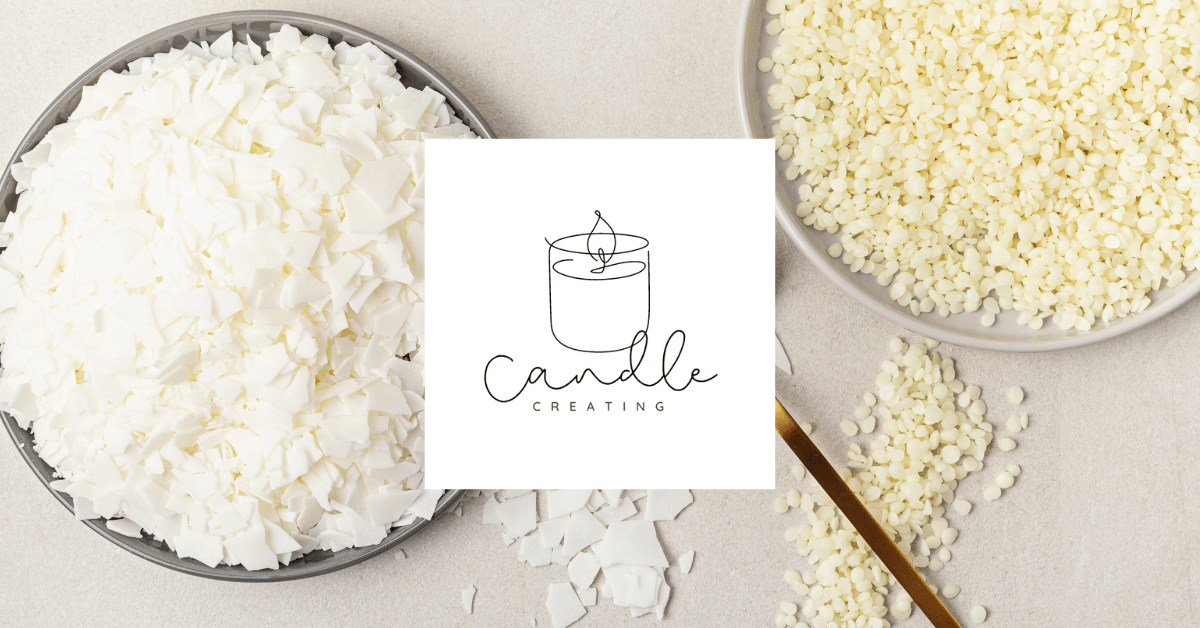Your cart is currently empty!

Choosing the Right Wax for Your Candles
Creating the perfect candle involves more than just choosing a pretty color or a delightful scent. One of the most crucial decisions you’ll make is selecting the right wax. But don’t worry, we’re here to guide you through the wax jungle, so you can create candles that light up your life (and your living room).
1. Paraffin Wax
Pros:
- Affordable: Paraffin wax is one of the most cost-effective options, making it great for beginners and large-scale production.
- Versatile: It holds color and scent well, and it comes in different melting points for various candle types.
Cons:
- Non-renewable: Made from petroleum, it’s not the most eco-friendly option.
- Soot: It can produce more soot compared to natural waxes, which might not be ideal for indoor air quality.
Paraffin wax is like that reliable friend who’s always there when you need them. It’s dependable, easy to work with, and gets the job done without fuss. If you’re starting out and want to experiment with colors and scents, paraffin wax is a solid choice.
2. Soy Wax
Pros:
- Eco-friendly: Made from soybeans, it’s a renewable resource.
- Clean burn: Produces less soot and burns longer than paraffin wax.
- Easy to clean: Spills can be cleaned up with soap and water.
Cons:
- Frosting: Soy wax can develop a frosted appearance on the surface, which some people don’t like.
- Scent throw: It may not hold scent as strongly as paraffin wax.
Soy wax is like that eco-conscious friend who always reminds you to recycle. It’s environmentally friendly and burns cleaner, making it a great option if you’re concerned about indoor air quality. Plus, it has a lovely natural finish that adds a touch of rustic charm to your candles.
3. Beeswax
Pros:
- Natural and pure: It’s one of the oldest candle-making materials, with a naturally sweet scent.
- Air purifier: Beeswax candles release negative ions that can help purify the air.
- Long burn time: These candles burn longer and produce a warm, steady glow.
Cons:
- Expensive: Beeswax is pricier than other waxes.
- Hard to color and scent: Its natural color and scent can overpower added dyes and fragrances.
Beeswax is like that luxurious friend who always has the best of everything. It’s a premium option that offers a beautiful, natural glow and a clean burn. If you’re looking for a high-quality candle and don’t mind the higher cost, beeswax is a fantastic choice.
4. Coconut Wax
Pros:
- Sustainable: Derived from coconuts, it’s renewable and eco-friendly.
- Great scent throw: Holds fragrance well and has a slow, even burn.
- Smooth finish: Creates a creamy, smooth finish for a high-end look.
Cons:
- Cost: It’s more expensive than soy or paraffin wax.
- Availability: Can be harder to find than other types of wax.
Coconut wax is like that trendsetter friend who’s always ahead of the curve. It’s luxurious, eco-friendly, and offers an exceptional scent throw. If you want your candles to stand out with a smooth, high-end finish, coconut wax is the way to go.
5. Palm Wax
Pros:
- Renewable: Made from palm oil, it’s a renewable resource.
- Crystallized appearance: Creates a unique, crystallized finish that looks stunning.
- Long burn time: Burns slowly and evenly.
Cons:
- Environmental concerns: The production of palm oil has been linked to deforestation and habitat destruction.
- Cost: More expensive than paraffin and soy wax.
Palm wax is like that artistic friend with a flair for the dramatic. It creates candles with a beautiful, crystallized look that’s sure to impress. However, if you choose palm wax, make sure it’s sourced sustainably to avoid contributing to environmental issues.
Comparison Table
| Wax Type | Pros | Cons |
|---|---|---|
| Paraffin | Affordable, versatile | Non-renewable, produces soot |
| Soy | Eco-friendly, clean burn, easy to clean | Frosting, less strong scent throw |
| Beeswax | Natural, purifies air, long burn | Expensive, hard to color/scent |
| Coconut | Sustainable, great scent throw, smooth | Expensive, less available |
| Palm | Renewable, unique appearance, long burn | Environmental concerns, expensive |
Choosing the Right Wax for You
So, how do you choose the right wax for your candles? Consider the following questions:
- What’s your budget?
- If you’re on a tight budget, paraffin or soy wax might be your best bet.
- How important is sustainability to you?
- For eco-friendly options, consider soy, beeswax, or coconut wax.
- What type of candles are you making?
- For vibrant colors and strong scents, paraffin wax is excellent.
- For a natural, rustic look, soy or beeswax works well.
- For high-end, luxurious candles, coconut wax is ideal.
- Do you have any indoor air quality concerns?
- If you’re worried about soot, opt for soy, beeswax, or coconut wax.
- How important is appearance?
- If you want a unique, crystallized look, palm wax is a great choice.
- For a smooth, creamy finish, go with coconut wax.
A Few Candle-Making Tips
- Melt Wisely: Always use a double boiler to melt your wax to avoid overheating.
- Mix Thoroughly: When adding fragrance and dye, make sure to mix thoroughly for even distribution.
- Mind the Temperature: Pour your wax at the recommended temperature for your specific type to avoid issues like sinkholes and frosting.
- Wick It Right: Choose the right wick size for your candle diameter to ensure a proper burn.
Conclusion
Choosing the right wax for your candles is like finding the perfect pair of shoes – it’s all about what fits best for your needs and style. Whether you’re a budget-conscious beginner or an eco-friendly enthusiast, there’s a wax out there for you. Happy candle making!
Also Read: Essential Tools for Candle Making – Handmade Candles (candlecreating.com)








